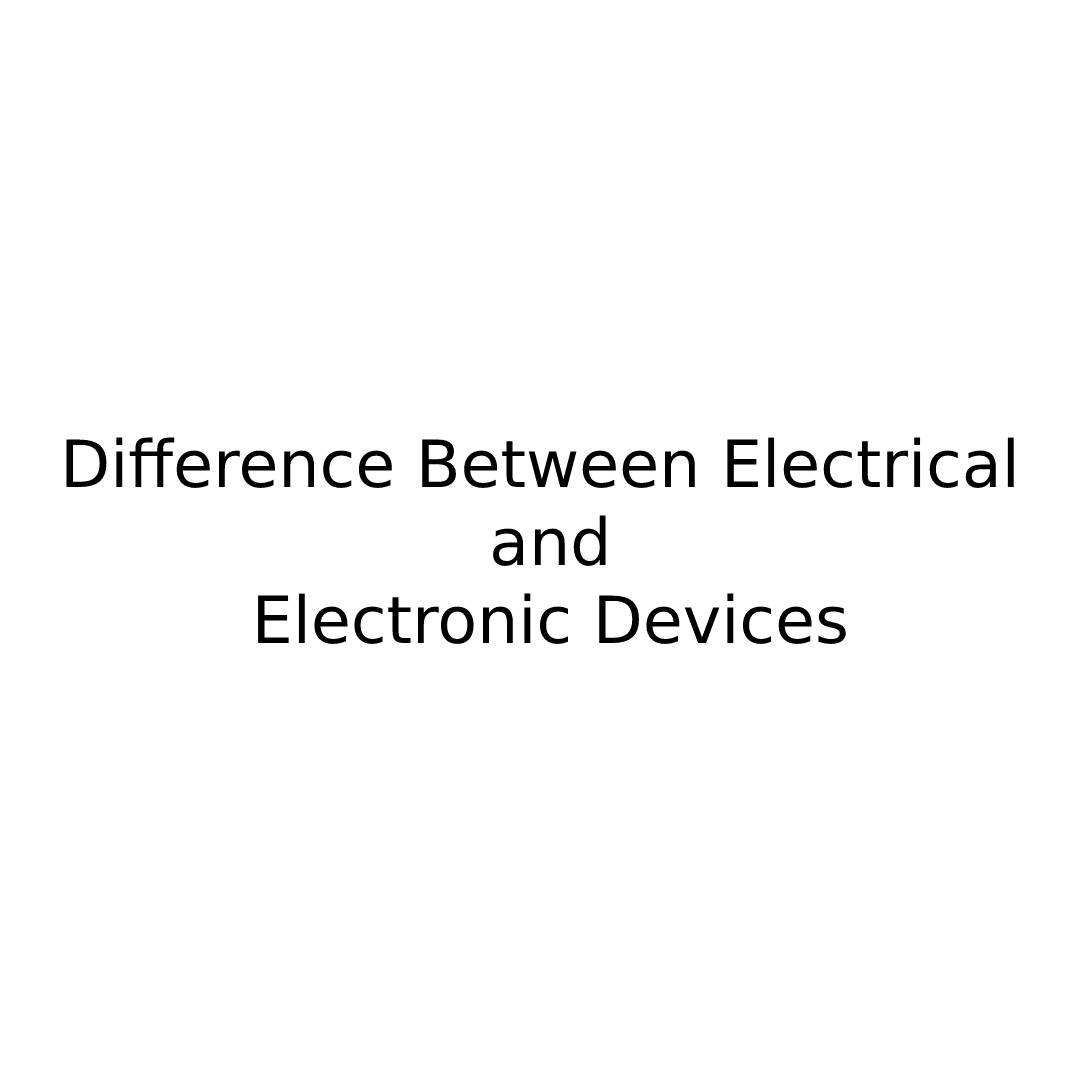The world is wired with devices of various shapes and sizes that make our lives more convenient, help us stay connected, and even keep us entertained. When it comes to technology, a fundamental distinction is often made between electrical and electronic devices. This difference might seem subtle at first glance, but it has significant implications for how devices function and how we interact with them. In this comprehensive exploration, we will unveil the unique characteristics of electrical and electronic gadgets, clarify misconceptions, and illustrate the ways they shape our modern world.
The Essence of Electrical Devices
Electricity is the foundation of most modern technology, and electrical devices are the tangible components that harness power for a multitude of functions. These devices manipulate electric currents and voltages to perform mechanical tasks or to generate light, heat, or magnetic fields. From the humble light bulb to the industrial motor, electrical devices are the backbone of almost every sector.
Unlocking the Power of Electricity
The primary purpose of electrical devices is to convert energy. Generators harness kinetic energy, such as that produced by wind or water, and transform it into electrical power. This power then flows through transmission lines and is converted by transformers to the right voltage for various uses. Motors, in turn, convert electrical energy back into mechanical energy, propelling anything from a small fan to a giant ship.
Diversity in Electricity Applications
The range of applications for electricity is as broad as it is essential. For instance, you have resistors that impede the flow of electricity, capacitors that store electrical energy, and inductors that resist changes in current. All these components are used in various configurations to produce a wide array of effects, from producing sound in speakers to regulating temperature in ovens.
Emergence of Electronic Devices
Whereas electrical devices are all about converting and utilizing electric power, electronic devices descend from the more advanced field of electronics, which involves the control of electrical energy through active and passive components. These components include semiconductors, which are the heart of electronic circuits, and transistors, which act as switches and amplifiers.
Transition to Semiconductor Components
Semiconductors, with their unique properties, have paved the way for a revolution in technology. They can conduct electricity under some conditions and not under others, making them essential for diodes and transistors. Early electronic devices were heavy and cumbersome, filled with tubes and requiring vast amounts of power. Semiconductors revolutionized this by enabling the creation of the integrated circuit, which could house thousands to millions of transistors on a single chip.
Impact of Integrated Circuits
Integrated circuits, or microchips, are at the heart of almost all electronic devices today. They have made it possible to develop devices that are smaller, more efficient, and more reliable. Microprocessors, for example, are found in computers, smartphones, and even some cars, where they act as the central processing unit (CPU), performing calculations and managing data.
Untangling the Confusion
The distinction between electrical and electronic devices is often muddled. It’s important to recognize that all electronic devices are electrical, but not all electrical devices are electronic. The key difference lies in the manipulation of electricity—electronic gadgets use the controlled flow of electrons through different media (including air) to perform more complex and specific tasks than purely electrical devices.
Deconstructing the Definitions
An electrical device is any machine powered by electricity, while electronic devices contain logic circuits that generate specific outputs based on the input. Electronic devices interpret and respond to electrical signals in a way that an electrical device, such as a lamp or a blender, does not.
Examples to Clarify
For example, consider the difference between an electric ceiling fan and an electronic thermostat. The fan, a purely electrical device, converts electrical energy into mechanical energy to turn blades and circulate air. On the other hand, an electronic thermostat uses sensors and microcontrollers to interpret temperature changes and adjust the environment accordingly. It contains electronic components that can perform logic operations, allowing for automated temperature control.
Impact on Society and Industry
Understanding the distinction between electrical and electronic devices helps to appreciate the depth of technology’s influence on our daily lives. From the most straightforward of appliances to the most advanced computing systems, these devices have reshaped industries and spurred innovation.
The Evolution Continues
The march of technology is relentless. As electronics continue to shrink, we see more integration, leading to ‘smart’ versions of devices that can communicate with each other and with humans. Think of the smart home, where electronic sensors and devices work together to provide security, comfort, and energy efficiency.
The Next Frontier
Quantum computing is on the horizon, promising to be the next frontier in processing power by utilizing the unique characteristics of quantum mechanics. This leap would not have been possible without understanding the distinction between electrical and electronic devices and the fundamentals of manipulating energy at a quantum level.
The Human Element
Behind the technical jargon and complex machinery are humans—innovators, engineers, and designers—who continually push the boundaries of what’s possible. Their creativity and expertise play a vital role in how we harness technology’s potential.
Nurturing a New Generation
Educational programs that emphasize the STEM (Science, Technology, Engineering, and Mathematics) disciplines are crucial in preparing the next generation to not only use but also to create the technology that will define our future. Understanding the distinction between electrical and electronic devices lays the foundation for more advanced studies and innovative thinking.
Conclusion
In conclusion, the distinction between electrical and electronic devices may seem subtle, but it carries significant weight in the world of technology. By recognizing and understanding this difference, we can gain a deeper appreciation for the devices that power our modern lives and prepare ourselves for the innovations that are yet to come. It’s an exciting time to be part of a world that is so heavily influenced and driven by the marvels of electricity and electronics. As technology continues to advance, so too will our understanding of how to harness its full potential.



